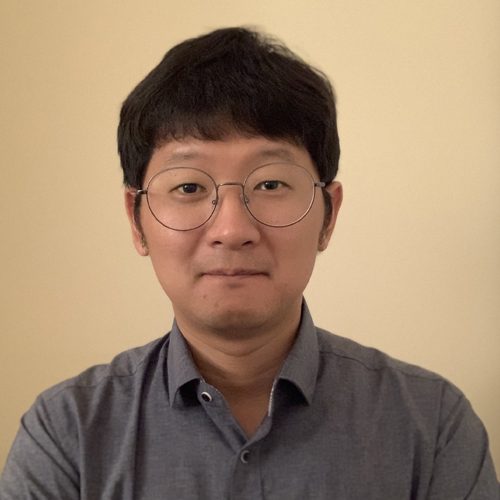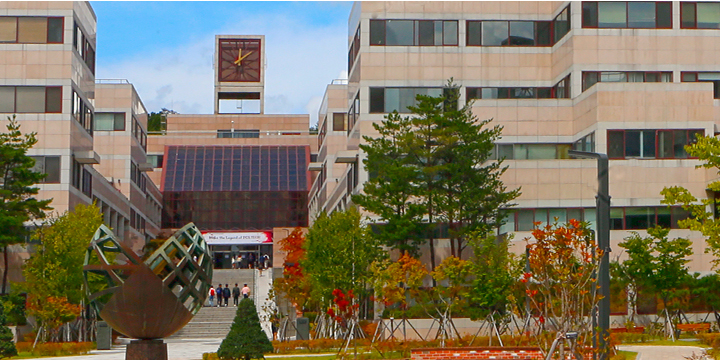
A brief summary of my research
Hello, this is Kyoung-Seog Lee who is going to join POSTECH in the near future. I am happy to have this chance to introduce my research works.
I am studying algebraic geometry and related fields. Traditionally, algebraic geometry is a subject studying geometry of algebraic varieties, which are mathematical object locally given by solutions of finitely many polynomial equations. Projective spaces, Riemann surfaces, elliptic curves, algebraic K3 surfaces, algebraic Calabi-Yau manifolds and Fano varieties are typical examples of algebraic varieties. Algebraic geometry has a long history and it is a very much developed area of mathematics. Especially, there had been revolutionary developments by Grothendieck and his collaborators on the subject in 20th century. Moreover, techniques and perspectives of algebraic geometry have been very influential to many other areas so it becomes one of the most essential subject in pure mathematics. I like to study algebraic varieties via various perspectives, theories and invariants. To be more precise, I am trying to understand algebraic varieties via derived categories, Cox rings, vector bundles, birational geometry, Hodge theory and other tools.
When I was a graduate student, I spent most of my time studying algebraic varieties using derived categories. Derived category is a tool of homological algebra developed by Grothendieck and Verdier in order to extend Serre duality. Bondal, Orlov, Kapranov, and many others developed the methods to use derived categories of coherent sheaves as invariants of algebraic varieties to extend the scope of algebraic geometry. Later Kontsevich used this theory to explain mirror symmetry phenomena and it draws more attention after then. Nowdays, derived categories of coherent sheaves become one of the most intensively studied invariants of algebraic varieties. Derived categories of algebraic surfaces with negative Kodaira dimension are rather well-understood but people did not know much about the invariants when the surfaces have positive Kodaira dimensions. When I was a graduate student, Bohning-Bothmer-Sosna discovered that there is a new interesting and unexpected type of category, called quasiphantom category, in the derived category of the certain algebraic surface with positive Kodaira dimension. Being motivated by this work, I constructed new examples of quasiphantom categories in the derived categories of some surfaces of general type during my Ph.D. study. And later, I constructed several more new examples of quasiphantom categories with Timofey Shabalin, Yun-Hwan Kim and Hyun Kyu Kim.
The most intensively studied algebraic varieties are Riemann surfaces or equivalently 1-dimensional complex curves, i.e. algebraic curves. Algebraic surfaces, 2-dimensional algebraic varieties, are rather well understood when they have Kodaira dimensions less than 2. However, surfaces of general type which are algebraic surfaces with Kodaira dimension 2 are still mysterious objects and we do not know how to classify them. Classifying surfaces of general type is one of the most important remaining problems in algebraic geometry which is a missing part of the classification of algebraic surfaces. With JongHae Keum, I proved that certain classical surfaces of general type are Mori dream spaces, i.e. they are ideal objects in birational geometry. Later, with Davide Frapporti, I proved that all reducible fake quadrics are Mori dream spaces. And then, with JongHae Keum, I developed how to study these surfaces of general type with their Cox rings.
The construction of quasiphantom categories can be understood as studying semiorthogonal decompositions of derived categories of algebraic varieties. Indeed, semiorthogonal decompositions of derived categories of coherent sheaves of algebraic varieties are very important tools to study the derived categories. From this perspective, with Young-Hoon Kiem, I did some work studying which categories can be contained in the derived categories of Fano varieties. Especially, I proved that the derived category of a complete intersection variety can be embedded into the derived category of a Fano variety with Young-Hoom Kiem, In-Kyun Kim, and Hwayoung Lee. And later with Young-Hoon Kiem, we found many other manifolds whose derived categories can be embedded into derived categories of Fano varieties. There are many applications of semiorthogonal decomposition. For example, one can use semiorthogonal decompositions of Fano varieties to study vector bundles on them. With Yonghwa Cho and Yeongrak Kim, I described the moduli spaces of Ulrich bundles on intersections of two 4-dimensional quadrics. And later, I and Kyeong-Dong Park described the moduli space of Ulrich bundles on V5 which is another interesting Fano manifold. Last but not least we classified irreducible equivariant Ulrich bundles on certain homogeneous Fano manifolds.
And I began to study the moduli space of vector bundles on curves after I met M. S. Narasimhan when I was a postdoc at KIAS. The moduli space of vector bundles on a curve is one of the most important and classical objects in the moduli theory and it plays important roles in algebraic geometry, differential geometry, topology to name a few. With Narasimhan, I studied derived categories, motives and birational geometry of these spaces and I also began to work with Indranil Biswas and Tomas Gomez. And recently, I have been working with Han-Bom Moon to make further developments in this field.
Now I am working in Miami and I have spent most of my time working with Ludmil Katzarkov. We studied (quasi)phantom categories, birational geometry, Hodge theory, and non-Kahler manifolds together. And there are many colleagues here who are working on topology and differential geometry and I also could learn many things from them during my stay here. In these days, with my colleagues, I am trying to extend my research area, especially applying techniques from algebraic geometry to other areas. For example, we are trying to develop methods to study low dimensional topology and non-Kahler complex manifolds using algebraic geometry.
Thank you for reading this long summary and I hope to communicate more with you at the university.










 ?php echo aslang('alert','is_login_service'); ?>
?php echo aslang('alert','is_login_service'); ?>




.png)











